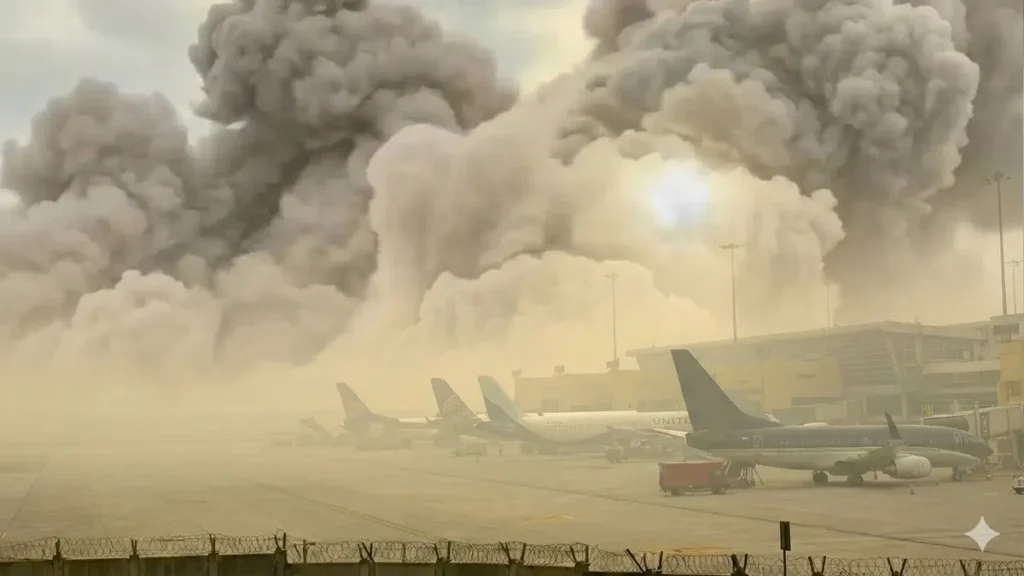A volcanic eruption in Ethiopia has sent a massive plume of ash across the Red Sea, Oman, Yemen, and into northern India, affecting flight operations in Delhi. The Hayli Gubbi volcano, dormant for several thousand years, erupted on Sunday morning, releasing ash thousands of feet into the atmosphere.
The Indian Directorate General of Civil Aviation (DGCA) has issued an advisory urging airline operators to “strictly avoid” volcanic ash-affected zones. Several domestic and international flights have been canceled, delayed, or rerouted as a precaution. Air India has reportedly canceled 11 flights, while carriers such as IndiGo, Akasa Air, and KLM are also affected.
Volcanic ash is made up of tiny, abrasive particles that can damage aircraft engines, contaminate runways, and reduce visibility, posing significant hazards to aviation. According to Mrutyunjay Mohapatra, Director General of the India Meteorological Department (IMD), the ash plume is between 8.5 km (5.2 miles) and 15 km above sea level. It is expected to temporarily affect flight operations and satellite functions but is unlikely to impact weather or air quality in Delhi, which was already recorded as “very poor” on Tuesday.
Skymet Weather, a private meteorological agency, noted that predicting the dispersion of volcanic ash is difficult. IMD estimates that Delhi’s skies should clear by Tuesday evening.
The DGCA has instructed pilots to report any encounters with ash, including unusual engine performance or cabin smoke, and to inspect aircraft that operate near affected zones. Flights to impacted airports may be delayed or suspended if conditions worsen.
Experts highlight that measuring volcanic ash contamination requires pre-deployed sensors, which were not in place for this sudden eruption. The exact level of contamination remains unclear, although it is categorized into low, medium, and high, with guidance on safe flight durations for each level.
Volcanic ash clouds are rare but can severely disrupt global travel. The 2010 Eyjafjallajökull eruption in Iceland caused widespread airspace closures across Europe, marking one of the worst travel disruptions since World War II.

